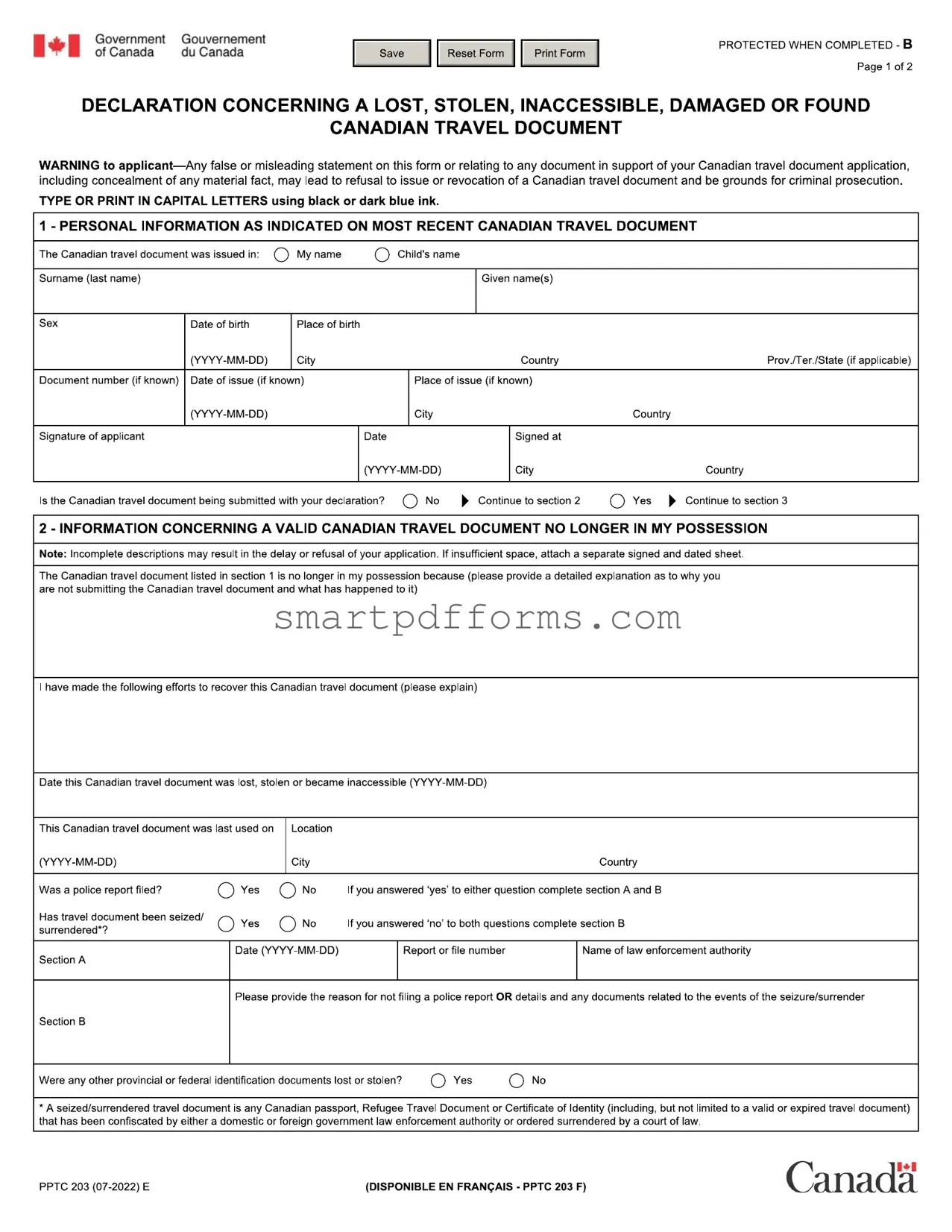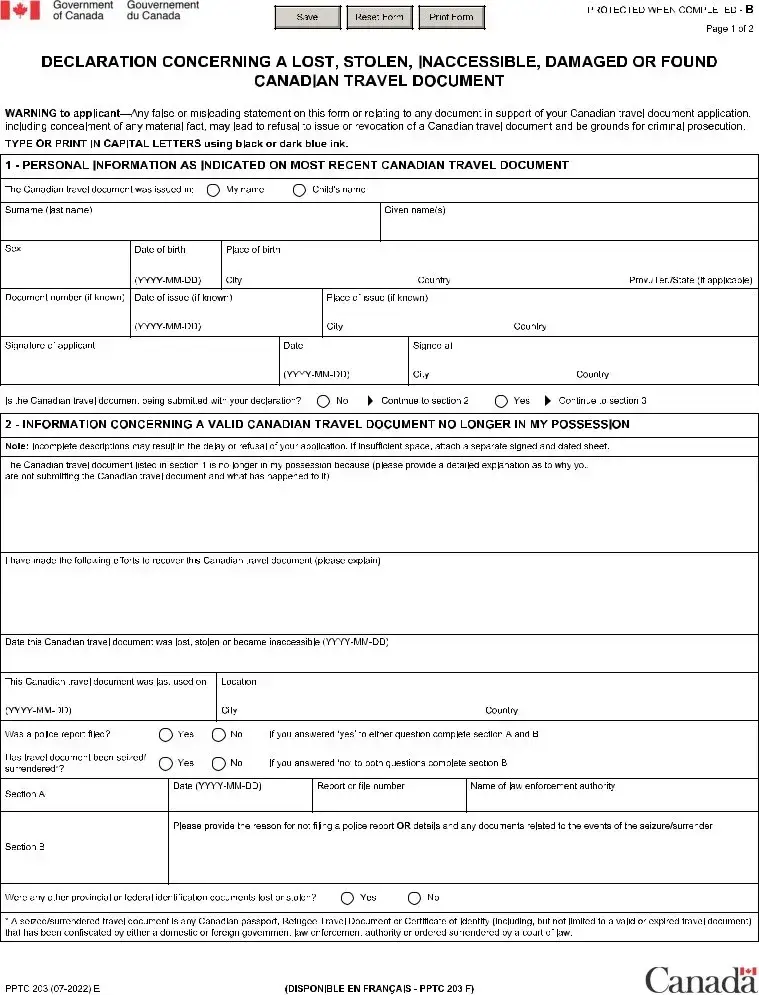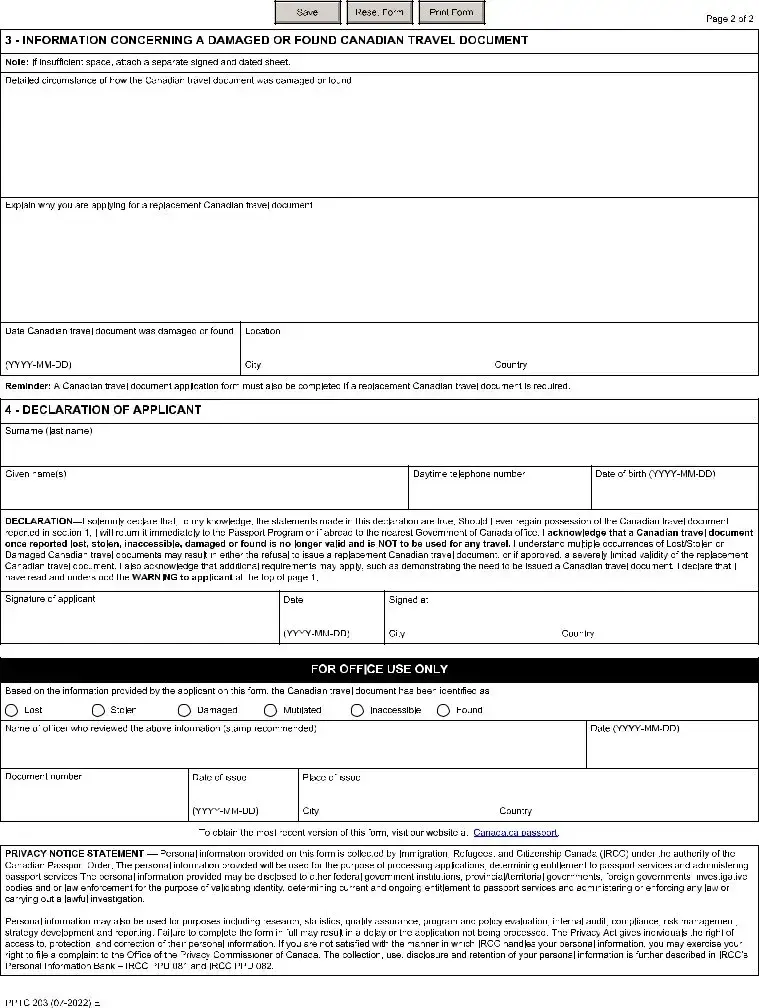Navigating the process of dealing with lost, stolen, or damaged Canadian travel documents can feel overwhelming, but understanding the PPTC 203 form is a crucial step towards resolution. This form serves as an official declaration concerning a Canadian travel document that is no longer in the applicant's possession for various reasons, whether it was lost, stolen, inaccessible, damaged, or found again after being reported. It requires detailed information about the applicant and the missing document, including personal details as they appeared on the most recent document, and a comprehensive account of the circumstances surrounding its loss or damage. Importantly, the form also contains sections for applicants to explain their efforts to recover the document, report whether a police report was filed, and detail any damages or the discovery of the document if applicable. The seriousness of the declaration is underscored by a warning of potential criminal prosecution for false or misleading statements, emphasizing the importance of honesty and accuracy in completing the form. Additionally, the form outlines the implications of reporting a document in this manner, including the invalidation of the reported document and potential restrictions on future documents issued. Through the information provided on the PPTC 203 form, the involved authorities can take necessary actions to prevent misuse of lost or stolen documents and to process applications for replacements, ensuring the integrity of Canadian travel documents.


